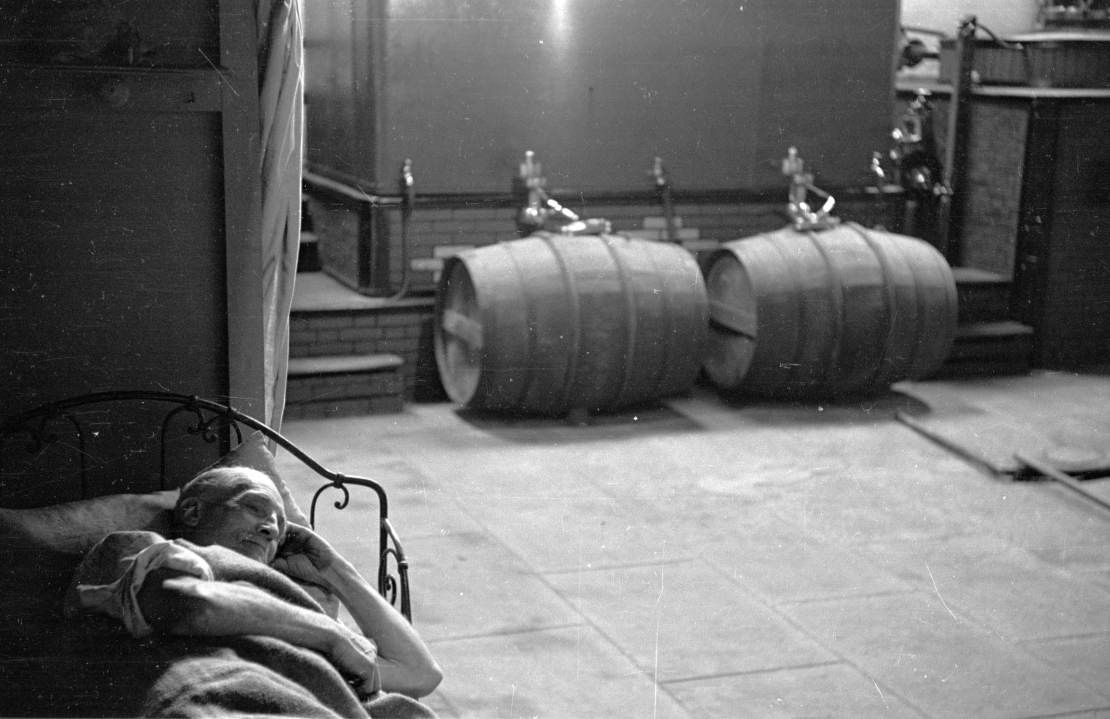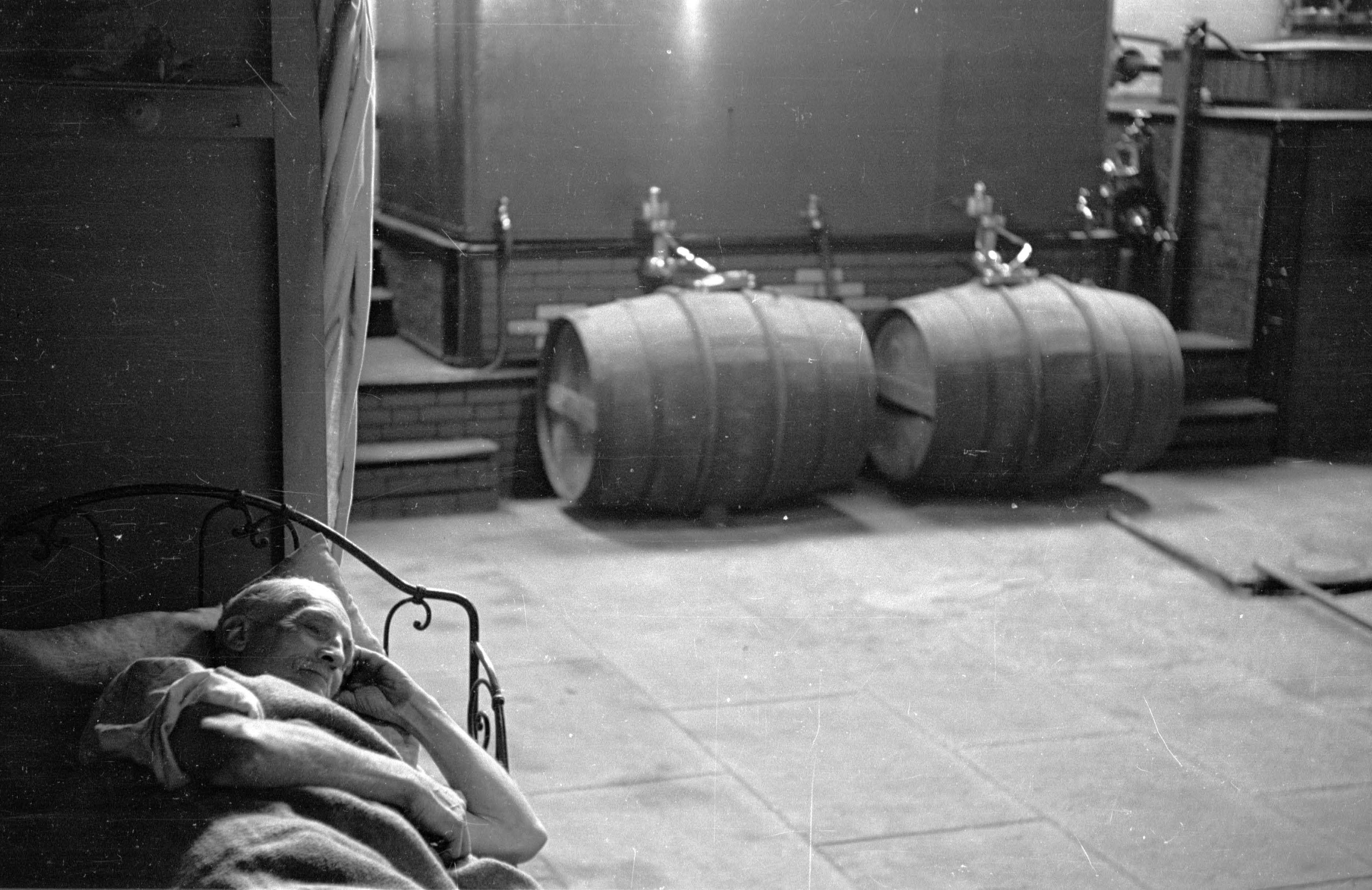We move through silent streets walled by shuttered houses and closed stores. I know that the French leave en masse in August, but in Cognac the ritual seems also to extend to wintertime. Even the landscape seems somnambulant. Skeletal vines whose cordons point crabbed fingers towards where the sun should be line the roadsides. Yet there is life. Something is stirring in the region’s black, mould-covered, thick-walled chais.
At the bottom of a set of worn stone steps in Remy-Martin’s Domaine de Grollet is a collection of large and clearly ancient casks. It is here where the blend of Cognacs which comprise the house’s iconic prestige blend Louis XIII spends the final four years of its life. A sample is drawn, glasses are filled.
As it wets the lips, so it triggers a rush of images in the mind which go beyond simply ‘tasting’ and into a realm where the liquid seems to be a living entity. This isn’t simply a drink where you can pick out fruit or spice or oak, this becomes a potent distillation of time. With any wood-aged spirit you are to some extent tasting the past, this is the most intense example with a palpable physicality — your tongue touched the rain-sodden lily of the valley and jasmine, the coats in the furrier’s cupboard brushed against your cheek as cigar smoke wreathed around your nose. It deepened, the pictures becoming more complex. After five minutes of silence, we look at each other and shake our heads. ‘Proust would have a ball with this,’ I mutter to my companion.
Outside once more, in chill midnight air, the walls of the chateau have been lit with two enormous clock faces. The point is well-made. The essence of Cognac is time.
The tasting makes a number of important points about spirits, not only Cognac. I recall that one whisky distillery used to have a sign in its warehouse which somewhat cheesily stated ‘Quiet: Whisky Sleeping.’ and while any walk through a warehouse may give that impression — after all, you can’t exactly seen what is happening inside a cask — nothing could be further from the truth.
Distillation is a dynamic process, the carving out of the desired heart from the mass of rising vaporous aromas, but it is less than half of the whole process. That new heart is hot and hard, it needs a slow conversation between spirit and wood with gentle breaths of oxygen for it to mellow and gain in complexity.
New Cognac manages to preserve the fruity flavours of the grape: green fruit, citrus, with its floral aspects: vine flower, violet, geranium, as well as its green grassy edges. Then there are the fruity esters created during fermentation: pear, peach, strawberry, pineapple, banana, fruit, rose.
These are evanescent, always changing. Some are more apparent in youth before becoming absorbed, changed or reduced by the effects of oak which itself doesn’t simply lay smooth vanilla, cocoa and caramel on top, but interacts with the spirit issuing forth cinnamon and clove and then over time the fungal, meaty, animalic rancio. It moves, shape-shifts.
In the cobwebbed repository of Frapin’s rarest Cognacs, the appositely-named ‘Paradis’, cellar master Olivier Paultes uncorks a demijohn of pre-phylloxera Cognac. We bend down and inhale its deep, heady aroma of nuts and flowers. Some weird transformation — 60 years in increasingly less active casks then even slower evolution in glass — has transformed a vibrant new spirit of pear and stewed quince and just-baked white bread into this vital ingredient to the firm’s prestige blend 1888, whose youngest component is 65 years old.
Frapin’s complex, elegant house style, whose flavours seem elongated on the palate, reaches its apogee here in a Cognac whose nose is a wave of mysterious fruits (sweet, dried, decayed, crystallised), sandalwood, honeysuckle, cocoa nibs, then rhubarb, polished shoes and rosemary thrown on a barbecue of vine cuttings.
Each of Cognac’s major houses has a similar story to tell — the mix of vetiver, coffee, prune and humidors in Hennessy’s typically bold Paradis; the animalic notes of Courvoisier’s l’Essence which balances date and the house’s signature grip; the exotic tropical lift of Martell’s l’Or de Jean Martell. All speak of the way in which their cellar masters have understood the processes of time and crafted something which speaks both of the house and the varied facets of the region. Each is made from one — at most two — grape varieties, all will have been aged for a similar amount of time in casks made of the same type of oak, yet all have a different and highly personal story to tell.
Neither is this the exclusive preserve of the larger houses. Across the region, smaller grower/distillers and old negociant firms have a similar feel for the passage of time. Take the sweet, fruity complexities of Grosperrin’s vintages, the musky masculinity of Bache-Gabrielson, or the concentrated lift of Leyrat’s Glory, which mixes salami, wax and vine flower. They talk of ‘natural’ Cognac where no syrup is added to help sweeten the finish, where purity of flavour and delicacy isn’t covered over by blunt sugary power — a problem with some cheaper Cognacs.
This is seen at its best in the range from Delamain where finesse and discretion are the watchwords. Here the summit is Voyage whose gentle and slowly evolving nose brings to mind a world of fine leather, tonka bean, espresso coffee, candied peels, membrillo and suede and velvety tannins. Flavours float and seem natural rather than bulked up.
These are, it must be said, expensive Cognacs with bottles in the thousands rather than tens of pounds, but considering the age and scarcity of their components (the Delamain is predominantly 19th century) they offer better ‘value’ (if such a term can be applied) than many single malt Scotches, especially the Cognacs from the smaller houses. What’s more, they offer a new insight into Cognac which goes beyond the brand and into the reality of the region.
Cognac speaks of the soil — the more chalk, the more finesse; it speaks of vintage — compare the differences between Grosperrin’s or Hine’s releases; it is also a place where the currently (over)hyped ‘natural’ winemaking has always been practised.
There’s no sulphur used to stabilise the wine (if there were, the spirit would have rank odours), it’s fermented dry (otherwise you burn the sugars in distillation) and has naturally high acidity (you need that for preservation). The aim is to capture the essence of the grape in the wine and then concentrate it still further through distillation.
With a wider range of smaller houses available than ever before as well as the biggest firms making new ventures into the upper realms, it is time to explore Cognac’s riches. It’s awake and alive.







Comments